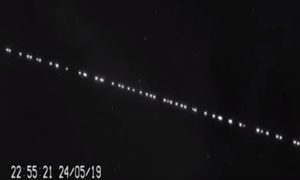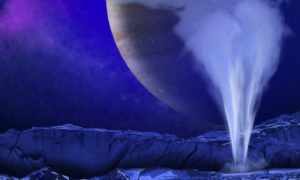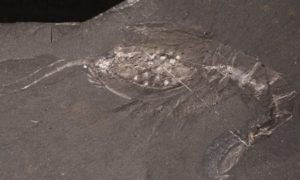Steam is in the atmosphere of the exoplanet K2-18b, say Canadian and American astronomers, who also believe that it could even have clouds of liquid water.
This planet, detected in 2015, has been of interest to astrophysicists since its discovery because it is in the habitable zone around its star and its surface is likely to be covered with water in the liquid state, an essential element to life as we know it.
“Thanks to our observations and the modeling of the planet’s climate, we have demonstrated that steam can condense in liquid water,” explains Björn Benneke, professor at the University of Montreal’s Exoplanets Research Institute (UoM).
It’s a first. This is the biggest step forward to date towards our ultimate goal of finding life on other planets, to prove that we are not alone.
Björn Benneke, professor at UoM’s Exoplanets Research Institute
Professor Benneke, student Caroline Piaulet and their collaborators at UdM and other American universities obtained these results using data collected by the Hubble Space Telescope during eight transits (when the exoplanet passes in front of his star).
According to the researchers, the exoplanet could have a hydrological cycle allowing water to condense in clouds and liquid rain to fall.
Landmarks
- No less than 4044 exoplanets have been officially detected in more than 3004 planetary systems.
- More than 40,000 additional exoplanets are currently awaiting confirmation.
- According to the most recent estimates, there are only 700 million billion rocky planets in the observable universe.
- Nearly two-thirds of all exoplanets known to date, Terres et super-Terres, are located in the habitable zone of their stars.
- Despite this abundance, it was previously extremely difficult to probe the conditions and atmospheric properties of these potentially habitable planets.
A super-Earth
The researchers estimate:
- that K2-18b is covered with a thick gaseous envelope and that it has a rocky core;
- that it would be about nine times more massive than the Earth;
- that its star (K2-18) is located at a distance of about 115 light-years from Earth, in the constellation Leo. This star is smaller and colder than the Sun.
Because of its greater proximity to its star, the K2-18b planet receives almost the same total amount of energy from its star as Earth receives from the Sun.
Since the discovery of the first exoplanet in the 1990s, astronomers have been trying to discover worlds likely to harbor life; a quest that remains futile to this day.
Researchers believe that the very thick gaseous envelope of K2-18b most likely prevents it from harboring life on its surface as we know it.
It could, however, shelter it in its gaseous clouds.
Be that as it may, the authors ,f this study, published in the Astronomical Journal. believe that their work represents a step closer to the direct detection of evidence of the presence of life in Canada. beyond our solar system, and at the dawn of the launch, planned for 2021, of the James Webb telescope , equipped with more precise instruments.
In 2017, the computer models created by British astronomers to study the exoplanet Proxima b suggested that the chemical composition of its atmosphere resembles that of the Earth, and that it has a primitive atmosphere composed of nitrogen and carbon dioxide. .
Kathy Ottowell is a seasoned journalist with nearly 15 years experience. While studying business at London Business School, Kathy conducted numerous research studies how social media advertising has changed the landscape of traditional PR. As a contributor to Tech Driod, Kathy covers health and science stories.






